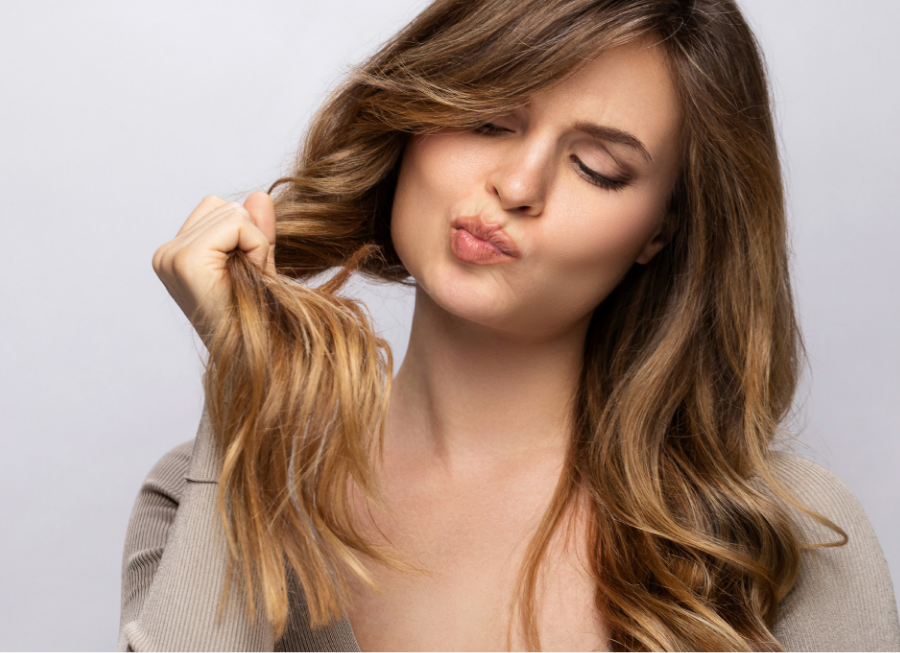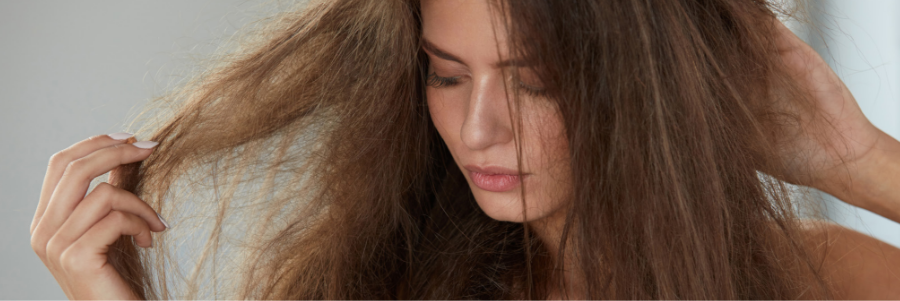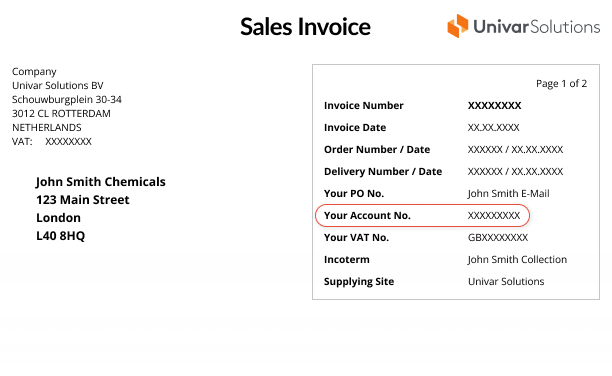We’re here to provide you with more information or help answer any questions you might have. Send us a note and we’ll get back to you as soon as possible.


Haircare consumers no longer have to put up with damaged hair, as brands are creating desirable and effective formulations that shoppers use, love, and trust. It’s time to say goodbye to the dreaded bad hair day for good.
Repairing damaged hair can seem like a big challenge, but with today’s innovations and ingredients, products are proving simple, convenient, and stress-free.
In this article, you’ll learn about common types of hair damage and the best ingredients to use in hair damage product formulas. We shine a spotlight on the benefits of repairing damaged hair, common types of damage, and ingredients for healthy hair.
Benefits of Repairing Damaged Hair
Tackling troublesome tresses or luxuriating lackluster locks—however you phrase it, the benefits of repairing damaged hair go way beyond winning the fight against the unwelcome bad hair day.
Like the formulation’s multifunctionality, there’s not just one benefit to repairing damaged hair, but a whole list of advantages. And the best part is they’re all simple, super effective, and suitable for different haircare types and damage.
Let’s delve into the benefits of repairing damaged hair:




Benefit #1: An act of self-care
Tackling damaged tresses supports emotional wellness, helping consumers feel more confident. Do-it-yourself products reflect consumers’ love for comforting, cocooning, and revitalizing formulas and at-home rituals.
Benefit #2: Convenient and flexible
Today’s product formats are big on what works for consumers and makes their lives easier. Formulations can be easily integrated into consumers’ lifestyles, whether at home or on the go.
Benefit #3: Repairs, respects, and restores damaged hair
Gone are the days of heavy, thick, and backbreaking formulas. Haircare now has an exciting and huge collection of very light, caring, and targeted formulas to treat and repair damaged hair.
Benefit #4: Helps hair look and feel healthier
Actively tackling damaged hair puts consumers back in the driving (or salon) seat of their hair health without having to leave home. Formulations that focus on damaged hair give consumers the tools to actively manage and experience positive hair health.
Benefit #5: Provides even more benefits for damaged hair
Consumers are looking for multifunctional haircare products, and today’s damaged haircare opportunities deliver. On top of easing flawed locks, shoppers can enjoy added benefits, ranging from touchless delivery to pollution protection and on-the-go cleansing.
Getting To the Root of the Problem
Let’s first explore what the structure of a hair strand looks like and what hair damage does to it. We can separate hair strands into three individual parts:
-
Hair has a protective outer layer called the cuticle.
-
It has a thick middle layer known as the cortex. The cortex’s role is to store pigment.
-
Then, there is the hair’s inner layer, the medulla. Interestingly, fine hair often doesn’t have this layer.
Hair strands that are both healthy and hydrated will have a closed cuticle that is shiny to the eye and smooth to touch. In healthy hair, cuticles form a protective barrier for the hair’s inner cortex, making it luscious, elastic, and strong.
Damaged cuticles have lifted scales. You may see unwanted frizz and annoying tangles, hair may look dry and dull, or it may change in texture or be harder to style. We typically lose 50 to 100 hairs a day, but damaged hair is vulnerable to more damage and often leads to more hair breakages.




Types of Damaged Hair
Hair damage comes in many different forms. Thanks to formulation knowledge, dedicated haircare scientists, and innovative developments, today’s damaged hair products can target all hair types and conditions. So whether consumers have straight, curly or textured hair, they can find their favorite product and get rid of damaged hair.
Let’s take a look at how hair can become damaged.
Heat Damaged Hair
Heat exposure changes the shape and the structure of keratin strands and strips natural oils from hair, making it more vulnerable to damage. Frequent use of heat damages the hair shaft and removes moisture, producing brittle hair and breakages.
While the regular use of hot tools such as blow dryers, straightening irons, and curling tools is a loved part of beauty regimes to create desired looks and styles, they increase the chance of heat-damaged hair. Hot weather and humid climates dry our hair out as well, limiting its moisture and hydration and increasing the risk of breakages.
Reducing heat treatments can help. Consumers can also lower the temperature of their hair tools to avoid the onset of heat-damaged hair. Applying a heat-protecting serum or spray before using heat-styling tools also creates a protective shield around hair strands. Gentler shampoos and conditioners also help prevent heat-damaged hair. Hydrating oils and weekly hair masks are also good options as they moisturize and promote good hair health.
Spilt Ends
Split ends, or trichoptilosis or schizotrichia as they’re officially called, occur when hair is physically split apart or frays. Split ends often happen when the hair becomes dehydrated, making it stiffer and harder to style.
Despite their name, split ends are not only at the ends of hair (though it’s where
we usually spot them); splits can happen higher up the hair strand too. There are three types of split ends: A basic split happens when the hair divides into two parts, a multiple split is where the hair looks like tree branches, and a cuticle split is where part of the cuticle is lost, but the cortex remains.
A gentle and careful approach to looking after hair is recommended to prevent split ends. Hydrating hair with a weekly hair mask or using an instant conditioner that provides moisturization and removes dryness is ideal.




Sun Damaged Hair
Just like our skin, the sun’s UVA and UVB radiation can cause severe damage to our hair. Sun damage can lead to frizziness, brittleness, discoloration, and split ends. The similarities between caring for our hair and skin under the sun’s gaze don’t end there, as hair also benefits from using a UV protectant .
Sun protection for the scalp is a growing sector that’s seeing exciting and diverse innovations and new product campaigns to communicate how sun exposure can damage the hair and scalp. ‘Scalp’ claims have gained noticeable growth in hair treatment launches in recent years.[1]
Leave in serums help to protect hair from sun exposure, while hydration mists give locks added moisture. Color-treated hair benefits from shampoos with UV filters as this helps prevent discoloration. After-sun soothing and cleansing products are also on the rise, as are new sun-damaged hair subcategories that appeal to hair loss concerns, including hair powder and hair shadow.
Chemically Damaged Hair
Hair treated with chemicals, such as hair dye, relaxers, or perms, can experience chemical damage.
Various chemicals are combined and react to achieve a certain look or style. Ammonia, the bleaching agent hydrogen peroxide, and para-phenylenediamine (PPD) are among the chemicals used in haircare colorants to create desired colors. Chemicals can cause dry and dull hair. Bleached hair, in particular, can be highly porous (unable to retain liquid) and vulnerable to breakage, heat-styling, sun damage, and pollution.
Chemical relaxers are treatments used to chemically change the structure of tight, kinky, or curly hair to straighten it. Relaxers work by breaking disulfide bonds within each hair strand to permanently alter the hair’s curl pattern. Relaxing hair like this can cause damage as the hair loses its natural elasticity and is more likely to break.
Moisturizing masks and leave-in serums replenish hydration in hair strands. Targeted shampoos and conditioners can contain ingredients ideal for treating and repairing damaged hair, like keratin protein.




Hard Water Hair Damage
Hard water can be just as harsh on hair as on the skin. Hard water contains high minerals, such as calcium, magnesium, and silica. The minerals create a buildup on the scalp, damaging the hair’s follicles and creating dry and straw-like hair.
Chelating shampoo or clarifying shampoos can remove the mineral residue that builds from hard water. After shampooing, a leave-in conditioner can counter the dryness and replace it with shine, smoothness, and softness. Cleansing hair masks work by naturally removing hard water deposits and eliminating discoloration, brassiness, and other damage created by mineral absorption.
Mechanical Damage
Mechanical damage refers to how we handle our hair. Tension in tresses can be caused by vigorous brushing, tight hairstyles, using wigs, weaves, extensions, or applying a rough towel dry to wet hair.
Things to look out for that signal mechanically damaged hair are tangled hair strands, thinning edges, or splits in the mid-part of the hair shaft. Taking a softer and gentler approach to hair care is important. Hair oils and serums make detangling easier and help avoid further breakages and overall hair damage.


1. Coconut Oil
Coconut oil has become a must-use ingredient in damaged haircare formulations due to its unique chemical structure and beneficial properties.
Coconut oil reduces protein loss, which, as our hair is protein, is vital to achieving healthy hair. A 2017 review of studies found that coconut oil decreased protein loss when used as a pre- and post-wash grooming product.
As the ingredient has a low molecular weight, it can also penetrate the hair shaft and make it easier for the hair to absorb compared to other types of oil for damaged hair. Therefore, it can replenish moisture and help protect hair from dryness.
2. Aloe Vera
Aloe Vera is a cactus-like plant that grows in hotter climates. The succulent is known for its nourishing and strengthening vitamins, including vitamins C, E, B-12, folic acid, and choline content, as well as its moisturizing benefits, making it a popular ingredient to treat dry hair.
Aloe vera also has anti-inflammatory properties that can limit scalp irritation and includes enzymes and fatty acid content that can reduce inflammation.
3. Glycerin
Glycerin can be derived from plant oils and has a very special and important role in the fight against damaged hair—as it can pull in moisture from the air.
Glycerin is a humectant, which by its very definition, reduces moisture loss. Its retention and preservation of moisture support hydration and hair health. Scentless and colorless, glycerin has become a sought-after ingredient as it can feature in any haircare formulation without changing the product’s sensorial profile.
Pure glycerin is often used in hair masks and hair spray formulations. When formulating hair masks, glycerin can be paired with aloe vera to lift the product’s hydration, nourishing and antimicrobial potential for the scalp, and alleviate dandruff.
4. Keratin
Keratin is a type of protective protein found in hair. The ingredient has expanded from skincare to haircare. It’s now featured in precision hair treatments, concentrated serums, and molecular repair. Around the world, new product launches with keratin have grown by over 10% in recent years.
Appealing formats, like no-rinse options, provide convenience and flexibility to treat hair on the go. Relevant claims and uses of keratin in haircare formulas are on the rise, influencing a plethora of haircare stories promoting hair health and growth.
5. Tea Tree Oil
A popular plant extract, tea tree oil, comes from the leaves of the Melaleuca alternifolia plant. Known for its peppermint or eucalyptus-like smell, the essential oil is designed to clean the hair, maintain its strength and reduce dandruff.
Damaged hair users can apply small amounts of diluted tea tree oil down the hair’s shaft to prevent dead skin from building up. In formulations, the ingredient can help keep hair moisturized, encouraging healthy hair growth and preventing hair loss.
6. Glyceryl Stearate
Widely used in hair conditioners and rinses, glyceryl stearate is an esterification product of glycerin and stearic acid. It forms when a reaction of acids and alcohol forms esters.
Presented as a white or cream-colored wax-like solid, glyceryl stearate is ideal for damaged hair as it forms a protective barrier and lubricant to lock in moisture by preventing water loss and combatting free radical damage.
7. Shea Butter
Shea butter, a byproduct of shea nuts, comes from the Vitellaria paradoxa tree in West Africa. The extracted fat, ivory in color, is popular among haircare users who seek out shea butter in its highest quality: raw and unrefined. The popular ingredient is known for preventing breakages, moisturizing hair, and limiting scalp irritation.
Shea butter has vitamins A and E, essential fatty acids, and emollient and healing properties. The ingredient’s high fatty acid content helps add moisture to the hair, lowering dryness and preventing split ends. Fatty acids also help boost shine and reduce frizz. It also contains anti-inflammatory properties that help lower redness and scalp irritation by providing healing effects. Shea butter can also protect hair from heat damage caused by styling tools.




Tips For Formulating Products For Damaged Hair
Use proven, specific, and complementary ingredients.
Select ingredients that deliver an efficacious solution that caters to damaged haircare consumers. Provide trustworthy and reliable formulations that stand by their damaged hair claims.
Convenience and credibility are no longer simply nice-to-have, as multifunctionality proves a popular way to pack in all the goodness that damaged hair needs. Opt for ingredients that protect, nourish, hydrate, and repair to give tired tresses an all-around healthy offering.
Formulate for specific types of hair damage.
New and targeted innovations are emerging in damaged hair care. Create new product launches that answer specific hair care needs and solve consumer concerns. Show that you understand their needs based on their hair type, damage, and lifestyle.
Repairing masks and oils and scalp care innovations are examples of products resonating and elevating the damaged haircare sector.
Take inspiration from skincare.
Skincare remains an influential big sister to haircare[1] , with hero skincare-related ingredients inspiring and invigorating innovations. The blur continues as shoppers want damaged hair products that protect, preserve and pamper.
Hybrid formulas that give consumers convenience and value are also popular. Brands are launching multifunctional skin/hair formulas and single products for the face, hair, and body.
Microdosing—where formulators lower the concentrations of active ingredients to prompt quicker and more visible results—is rising in haircare,[1] with leave-in and no-rinse hair treatments growing.
Consider claims and communicate clearly.
Consumers care about the wellbeing of their hair follicles, influencing the haircare products they pick. Formulations that not only cater to damaged tresses but also center on health, limit hair loss, manage its cause, and focus on easing stress and anxiety are proving popular.
Formulate Damaged Hair Products With Us
Shop Ingredients For Hair Repair Products
Haircare is full of invigorating, ingenious, and innovative ingredients. Today’s haircare ingredients target and tackle damaged hair effectively and combat hair damage concerns.
Finding and figuring out which ingredients are best for treating and repairing damaged hair can be a daunting task. So to make things easier, we’ve curated all the ingredients you need to make your very own haircare formulation for damaged hair.




Contact Us for Formulation Support
Finding the ideal formulation for damaged hair is the perfect blend of innovation and science.
From inspiration to implementation, learn everything you need to know about creating a formulation for damaged hair that reflects today’s haircare consumers’ needs and wants.
For tunnel car wash equipment performance, it's about striking a balance to ensure the vehicle is cleaned best BEFORE the finishing process. Otherwise, it will magnify and preserve the dirt under these protective layers. Since both applications are doing different things with the surface tension, facility owners need to be sure that the second part of the process begins at the right time to make vehicle surfaces more hydrophobic and shed water rather than further spreading it out.
Resources
References:
Aquabio, Car Wash History: From Simple Beginnings to Modern Day Features: https://aquabio.co/uncategorized/blog/car-wash-history-from-simple-beginnings-to-modern-day-features/
Automatic Vehicle Wash, Tunnel Systems: https://avwequipment.com/equipment-category/tunnel-systems/
Carwash.com, 5 long-lasting benefits of carwashing: https://www.carwash.com/5-long-lasting-benefits-carwashing/
Carwash.com, Going green: Save electricity, water and money: https://www.carwash.com/going-green-save-electricity-water-and-money/
Carwash.com, Lessons in carwash tunnel layout: https://www.carwash.com/lessons-carwash-tunnel-layout/
Detail Pro POS, 20 Car Wash Statistics in 2021 That Will Surprise You: https://www.detailpropos.com/blog/car-wash-statistics/
Focusedcarwash.com, Car Wash Industry Statistics: https://focusedcarwash.com/wp-content/uploads/2017/09/industry-statistics.pdf
How It Works, How does a car wash work?: https://www.howitworksdaily.com/how-does-a-car-wash-work/
JBS Industries, 10 Trends You Should Know About the Car Wash Industry: https://www.jbsindustries.com/blog/10-trends-you-should-know-about-in-the-car-wash-industry/
JBS Industries, Best Car Wash Add-Ons: https://www.jbsindustries.com/blog/car-wash-add-ons/
PSD Codax, Tunnel Car Wash Systems - A Beginner's Guide to Tunnel Car Wash Systems: https://www.psdcodax.com/tunnel-car-wash-systems-a-beginners-guide-to-tunnel-car-wash-systems/
Sunset North Car Wash, Here's What (Tunnel) Car Washes Are Really Doing to Your Car: https://sunsetnorthcarwash.com/2022/11/28/heres-what-tunnel-car-washes-are-really-doing-to-your-car/
Synchrony, 5 Reasons to Visit the Car Wash - and What to Watch Out For: https://www.mysynchrony.com/blog/automotive/5-reasons-to-visit-the-car-washand-what-to-watch-out-for.html
Thompson Sales Company, Wash Your Car Yourself or Take It Somewhere: https://www.thompsonsales.com/wash-your-car-yourself-or-take-it-somewhere/
Tommy's Express, Do clean cars improve gas mileage?: https://tommys-express.com/blog/do-clean-cars-improve-gas-mileage/
Way.com, Tunnel Car Wash - All you need to know: https://www.way.com/blog/tunnel-car-wash-all-you-need-to-know/
Way.com, All you need to know about clean cars and fuel efficiency: https://www.way.com/blog/clean-car-and-fuel-efficiency/
Western Carwash Association, Water Conservation: https://www.wcwa.org/page/WaterConservation




